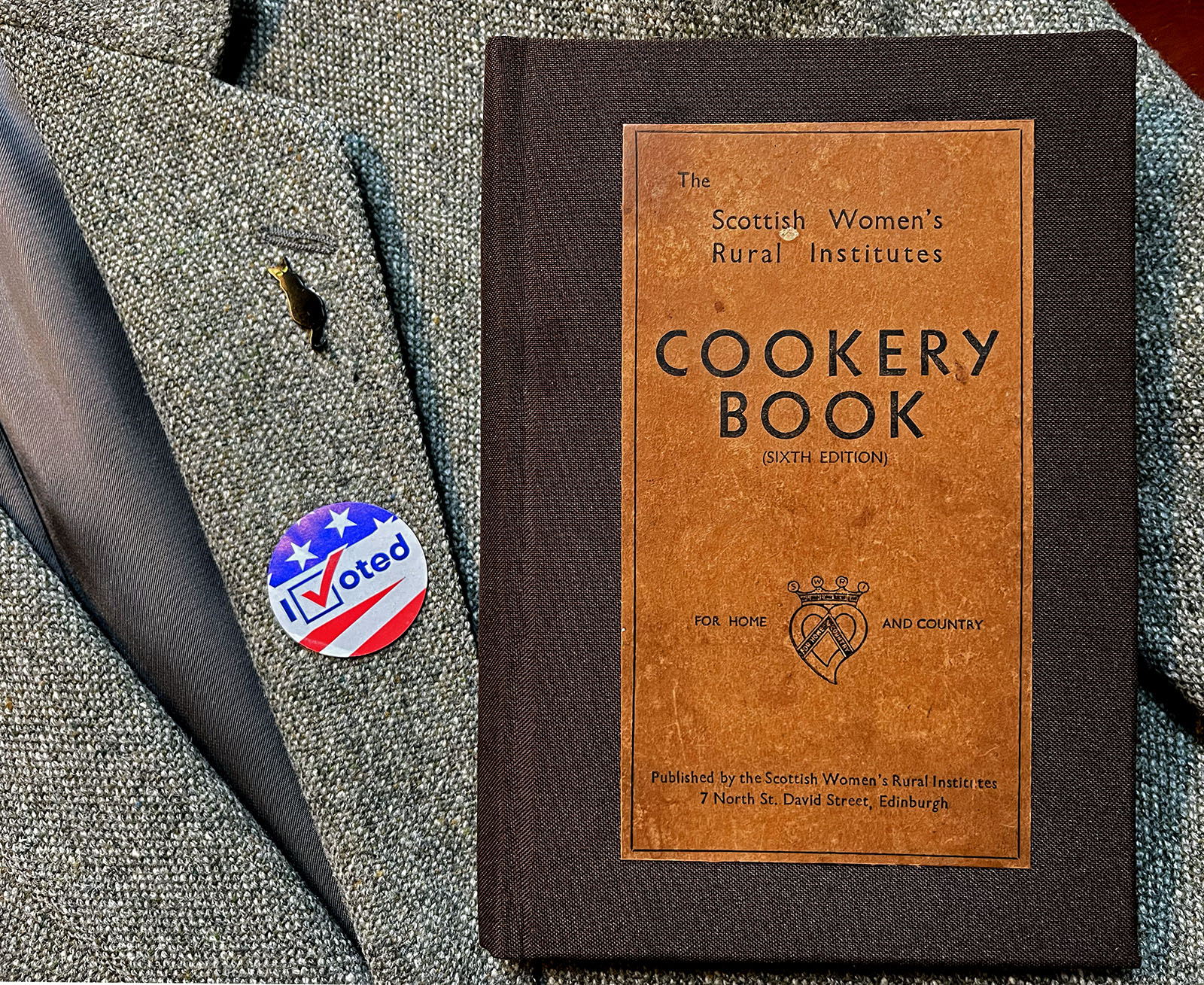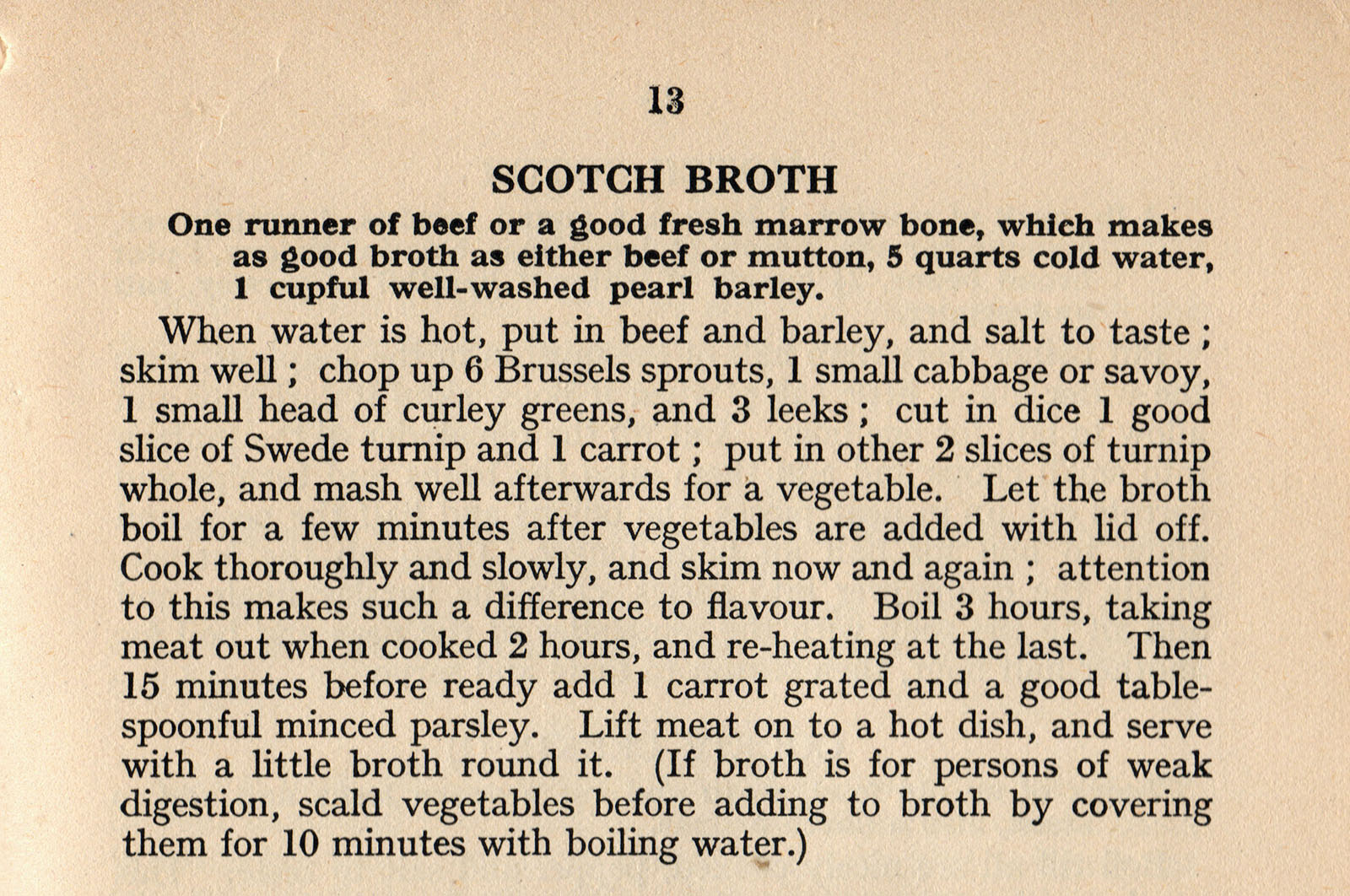
I hope I am wrong, but I am reluctantly inclined to conclude that traditional Scottish cooking is almost completely lost, just as my native cuisine, Southern American cooking, also is almost completely lost. Though there are older people who remember it (both here and no doubt in Scotland), and though there are even a few living souls who can still cook that way (both here and probably in Scotland), few people do (both here and probably in Scotland). As for Southern American cooks, most have thrown in the towel and, in the name of cost, convenience, and saving time, even use ultraprocessed foods. Others, like me, clean it up to make it healthier — even better. I’m not by any means suggesting that good cooking is a lost art. In many ways, the state of the art has gotten much better (though by no means cheaper), thanks largely to the great cooking schools, to travel, and to the better sort of restaurants.
Still, one can’t revise a traditional cuisine without knowing what it used to be. My reasoning was that, if the 1943 edition of Irma Rombauer’s The Joy of Cooking is a good reference for American cooking, then there might be a reference on Scottish cooking from the same period. I scoured eBay for old books. A book that is frequently mentioned in references on Scottish cuisine is from 1909, The Cookery Book of Lady Clark of Tillypronie. That book, though, seems to be both rare and expensive. I wonder, too, if it isn’t a reference that is too fancy, given that Virginia Woolf wrote about it in the Times Literary Supplement in 1909. I’m also much more interested in provincial cooking than in the cooking that was done in the big houses of lords and ladies.
I came across a couple of copies of a more humble, and much less expensive, reference: The Scottish Women’s Institutes Cookery Book, sixth edition, 1946. Though this book went through multiple editions after 1925 and clearly sold well, I suspect that few copies survive because the book was cheaply bound, with heavy staples and a paper cover. People probably just threw them away after they fell apart. The book was conceived and printed in Edinburgh. The gathering of recipes was about as honest as you can get. Members of the Scottish Women’s Institutes from all over the country were asked to send in recipes.
After I received my copy, I resolved to rebind it and try to preserve it. To have used it in its tattered condition would have caused further tattering. Preserving it meant removing the staples (which had gotten rusty), improvising with heavy sting to hold the pages together, and making a new cloth cover.
I have often said that the best soup I ever had in my life was a Scotch broth that I had in a small restaurant in Edinburgh. That was in 1985, on Princes Street, I believe, downhill from the castle. That soup probably was the most authentic Scottish cooking I’ve ever had. Though the barley is essential, I suspect that Scotch broth can’t really be made without bones. I remembered the Edinburgh soup as green but probably misremembered that the green came from peas, since the green in this recipe comes from leaves and leeks. A runner of beef, I believe, is a lean piece of steak from the shoulder. A Swede turnip is what Americans call a rutabaga.
This cookbook, as well as the eleven Waverley novels that I have read so far, strongly suggest that much of the Scottish pride in its cuisine relates to game. The treatment of vegetables, though, is barely short of cruel. I am very curious about a vegetable that appears to be still common in Scotland but which is hard to find in the U.S. That’s celeriac, which this book calls heart of celery or just celery. I’m still looking for some celeriac because I’ve never had any. But a friend who recently found some in the Asheville Whole Foods said that it’s smooth, like potatos, and reminded him more of apple and pine than celery. Sooner or later, I will find some celeriac.





